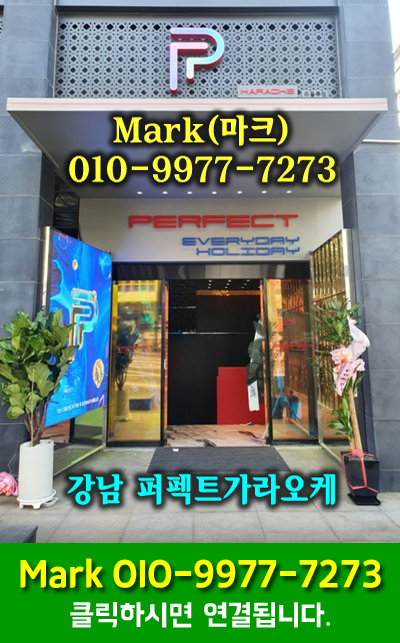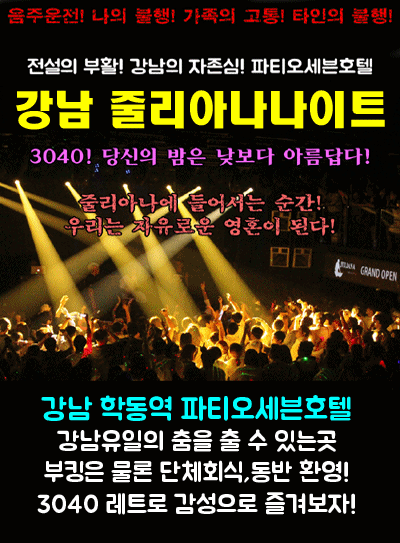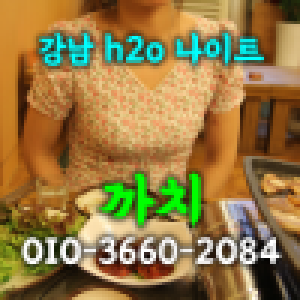How To Non-Stimulant ADHD Medication Options Business Using Your Childhood Memories
작성자 정보
- Stuart Morrow 메일보내기 이름으로 검색 작성
- 작성일
컨텐츠 정보
- 12 조회
-
목록
본문
What are the top ADHD medications that are non-stimulant? This article will explore Venlafaxine (clonidine), Guanfacine (monoamine oxidase inhibitors) and Clonidine (clonidine). All of these options have negative side effects, and every one may have a different side effect. Learn about the potential effects of each before deciding on which is the best choice for you. This article may also be interesting to you. Be sure to talk to your doctor about any possible risks or side effects you may experience prior to taking any medication.
Venlafaxine
Non-stimulant medications such as Venlafaxine could be beneficial to children with ADHD. It contains an enantiomer which inhibits dopamine's release. It is safe to take it prior to the bedtime, and has slow pharmacokinetics. This ensures that the medication will be efficient throughout the day. This treatment's safety is not known despite its widespread use off-label in the US. Dasotraline's therapeutic index is narrow and has caused the FDA to denial its approval. Other SNDRIs are in phase 3 trials.
Some doctors favor non-stimulant medications instead of stimulants in ADHD treatment. These medications are an effective second-line treatment for ADHD, especially for those who aren't able to respond to stimulants. The choice of medication for a child will ultimately depend on their individual needs and the preferences of a physician. Venlafaxine, a non-stimulant adhd sleep medication medication, has many advantages over stimulant drugs.
The drug was evaluated in a placebo-controlled study in children. The dosage was 10 mg x 3 days and seven out of ten children took it as an adjunct to other psychiatric medications. It reduced the symptoms of ADHD in children, and not causing any serious adverse reactions. It can also be utilized in combination with methylphenidate. However there is a need for more research. However, the effectiveness of venlafaxine is a question which is still to be resolved.
It is possible that it could affect your exercise performance like every other medication. Stimulant ADHD medications can increase the amount of muscle activity and reduce fatigue. However, it may also increase the risk of cardiac events. There is also the chance of abuse and a lot of athletes abuse it. It is crucial to know the way each drug functions and how it affects an athlete's body. The incorrect use of these substances can cause adverse side effects.
While ADHD medications are helpful for many children, you must take into consideration the correct diagnosis and any coexisting conditions before deciding which one is best adhd medication for adults for your child. Keep in mind that the internet should not be used to substitute for proper medical care. Always seek the advice of an authorized professional prior to starting a new medication. A consultation with a pediatrician should be taken if you think that your child has an illness that requires medical attention.
Clonidine
While stimulants constitute the majority of ADHD medication, Clonidine, natural adhd medication a non-stimulant Clonidine is an alternative. This medication is part of a group of drugs known as centrally acting alpha-agonist hypotensive agents. It is effective in reducing symptoms like hyperactivity, inattention, and impulsivity. Children are typically prescribed a lower dose of 0.05 to 0.1 mg per day. A special extended-release formulation of Clonidine is recommended for use in children aged between six and 17 years old.
Many adults and teenagers may benefit from non-stimulant ADHD medication. These medications are less harmful than stimulants since they have no abuse potential. The two main categories of non-stimulant medication are beta agonists and norepinephrine-modulators. These medications are effective in treating ADHD symptoms, but they may have additional risks for people who suffer from certain medical conditions.
Another kind of ADHD medication is clonidine, which can improve the effectiveness of other ADHD medication. Clonidine may enhance the effects of stimulants when used with it. As a side effect, it can lower blood pressure. Clonidine can be beneficial for people who struggle to remember to take their medication. Clonidine can trigger side effects.
Clonidine isn't the best adhd medication for adults with anxiety treatment for ADHD. However it could be an extremely beneficial treatment for certain people. Clonidine can be used conjunction with other medications to control certain symptoms, such as hyperactivity, aggression and impulsivity. Clonidine is a non-stimulant , and does not have the addictive properties of the traditional stimulant drugs. It isn't as addicting as stimulants, which is why it may be a better choice for some people.
One study looked at the safety and efficacy Clonidine for ADHD in children. The drug was well tolerated when administered in divided doses. The most commonly reported side effects were fatigue, somnolence and bradycardia. However electrocardiographic modifications were clinically not significant. In addition, it's unknown whether clonidine can be safely used with other ADHD medication.
Guanfacine
A new medication that is non-stimulant for ADHD is Guanfacine, a formulation with an extended release that is approved for use in children between the ages of six and 17 years old. The Medication for Adhd uk increases brain activity through selectively interfacing with the a2A receptor. Children younger than 12 years old are unlikely to benefit from the medication. However higher doses might be needed to enjoy long-term benefits. Guanfacine even though it is not a psychostimulant drug is comparable to other non-stimulant medications such as atomoxatine, or Clonidine.
The study's authors found that Guanfacine's effects are comparable as dextroamphetamine when it comes to improving ADHD symptoms. To determine if guanfacine is a good treatment for ADHD, researchers searched PubMed for published studies that compare the effects of guanfacine to dextroamphetamine. The study also revealed that guanfacine helped reduce the frequency of disruptive behavior in children and was comparable to dextroamphetamine.
ADHD medications that don't contain stimulants won't work as quickly as stimulants. Certain people may experience adverse effects, and it can take several weeks before they begin working. However they are a good choice for teenagers who suffer from addiction issues. Although they take longer to achieve an effect they are not addicting and never develop into an addiction.
Before beginning any new medication, be sure to speak with your doctor. This medication may interact with other medications, so be certain to consult your physician. Guanfacine side effects can be worsened by alcohol and depressants. It is also important to keep in mind that Guanfacine could interact with antihypertensive or antidepressant medications. This may lead to fainting or low blood pressure.
Guanfacine's effects on ADHD are promising. Thirteen ADHD patients aged between four and 20 years old were randomly assigned to receive guanfacine as part of an open-label study. The participants were compared with their counterparts in the control group. Guanfacine hasn't been proven to be an effective treatment for ADHD, despite its promising results. It's too early to determine if this drug will be effective for children.
Monoamine oxidase inhibitors
Monoamine oxidase inhibitors are not stimulants. ADHD medications. However, they can cause adverse effects and interact with other medications. Although they are an excellent alternative to treat ADHD, monoamine inhibitors of oxidase should not be the first choice for treating this condition. This medication is a potent antidepressant. It could cause adverse effects that are not suitable for all children.
It is unclear the neurobiological mechanisms that are responsible for the actions of monoamine-oxidase inhibitors in ADHD patients. It is known that nicotine and electronic cigarettes contain significant levels of monoamine-oxidase inhibitors. These substances can affect the functioning of the serotonergic system and the neurotransmitters norepinephrine as well as dopamine.
While monoamine oxidase inhibitors may be a non-stimulant drug for ADHD but they are usually used in conjunction with other treatments for depression and anxiety. Certain doctors prescribe an antidepressant using monoamine oxidase inhibitors treat depression however, Medication For Adhd Uk they should not be combined with them. They should be stopped at 14 days before beginning stimulant medication.
Monoamine oxidase inhibitors are considered non-stimulant medication for ADHD, many people do not respond to these medications. There are many other treatments for adhd treatment without medication which can aid your child in overcoming the behavioral problems that result from this condition. These issues can be addressed by a licensed psychotherapist. Online therapy programs like Regain, Betterhelp, and Talkspace are excellent resources for people seeking therapy.
Atomoxetine or Strattera is a form of ADHD medication that is a selective norepinephrine reuptake inhibitor. It is a non-stimulant medication and is used for treating children and adults with ADHD. Although it is regarded as a third-line drug, around half of patients find it to be efficient. One of its downsides is the length of time it takes the drug to begin working. Side effects include nausea, vomiting, dizziness, as well as dizziness.
Monoamine Oxase Inhibitors are a non-stimulant medication that treat ADHD. One side effect is drowsiness. The drugs can also decrease blood pressure and medication For adhd uk heart rate. It is important to closely check blood pressure and heart rate. In addition, non-stimulant medication for ADHD can cause irregular heartbeats. In a 12-month period of follow-up the blood pressure of Mr A remained steady. In the course of this time, blood pressure systolic fluctuated from 98 mmHg up to 132mm Hg. Diastolic blood pressure was in the 60s and 70s.
Venlafaxine
Non-stimulant medications such as Venlafaxine could be beneficial to children with ADHD. It contains an enantiomer which inhibits dopamine's release. It is safe to take it prior to the bedtime, and has slow pharmacokinetics. This ensures that the medication will be efficient throughout the day. This treatment's safety is not known despite its widespread use off-label in the US. Dasotraline's therapeutic index is narrow and has caused the FDA to denial its approval. Other SNDRIs are in phase 3 trials.
Some doctors favor non-stimulant medications instead of stimulants in ADHD treatment. These medications are an effective second-line treatment for ADHD, especially for those who aren't able to respond to stimulants. The choice of medication for a child will ultimately depend on their individual needs and the preferences of a physician. Venlafaxine, a non-stimulant adhd sleep medication medication, has many advantages over stimulant drugs.
The drug was evaluated in a placebo-controlled study in children. The dosage was 10 mg x 3 days and seven out of ten children took it as an adjunct to other psychiatric medications. It reduced the symptoms of ADHD in children, and not causing any serious adverse reactions. It can also be utilized in combination with methylphenidate. However there is a need for more research. However, the effectiveness of venlafaxine is a question which is still to be resolved.
It is possible that it could affect your exercise performance like every other medication. Stimulant ADHD medications can increase the amount of muscle activity and reduce fatigue. However, it may also increase the risk of cardiac events. There is also the chance of abuse and a lot of athletes abuse it. It is crucial to know the way each drug functions and how it affects an athlete's body. The incorrect use of these substances can cause adverse side effects.
While ADHD medications are helpful for many children, you must take into consideration the correct diagnosis and any coexisting conditions before deciding which one is best adhd medication for adults for your child. Keep in mind that the internet should not be used to substitute for proper medical care. Always seek the advice of an authorized professional prior to starting a new medication. A consultation with a pediatrician should be taken if you think that your child has an illness that requires medical attention.
Clonidine
While stimulants constitute the majority of ADHD medication, Clonidine, natural adhd medication a non-stimulant Clonidine is an alternative. This medication is part of a group of drugs known as centrally acting alpha-agonist hypotensive agents. It is effective in reducing symptoms like hyperactivity, inattention, and impulsivity. Children are typically prescribed a lower dose of 0.05 to 0.1 mg per day. A special extended-release formulation of Clonidine is recommended for use in children aged between six and 17 years old.
Many adults and teenagers may benefit from non-stimulant ADHD medication. These medications are less harmful than stimulants since they have no abuse potential. The two main categories of non-stimulant medication are beta agonists and norepinephrine-modulators. These medications are effective in treating ADHD symptoms, but they may have additional risks for people who suffer from certain medical conditions.
Another kind of ADHD medication is clonidine, which can improve the effectiveness of other ADHD medication. Clonidine may enhance the effects of stimulants when used with it. As a side effect, it can lower blood pressure. Clonidine can be beneficial for people who struggle to remember to take their medication. Clonidine can trigger side effects.
Clonidine isn't the best adhd medication for adults with anxiety treatment for ADHD. However it could be an extremely beneficial treatment for certain people. Clonidine can be used conjunction with other medications to control certain symptoms, such as hyperactivity, aggression and impulsivity. Clonidine is a non-stimulant , and does not have the addictive properties of the traditional stimulant drugs. It isn't as addicting as stimulants, which is why it may be a better choice for some people.
One study looked at the safety and efficacy Clonidine for ADHD in children. The drug was well tolerated when administered in divided doses. The most commonly reported side effects were fatigue, somnolence and bradycardia. However electrocardiographic modifications were clinically not significant. In addition, it's unknown whether clonidine can be safely used with other ADHD medication.
Guanfacine
A new medication that is non-stimulant for ADHD is Guanfacine, a formulation with an extended release that is approved for use in children between the ages of six and 17 years old. The Medication for Adhd uk increases brain activity through selectively interfacing with the a2A receptor. Children younger than 12 years old are unlikely to benefit from the medication. However higher doses might be needed to enjoy long-term benefits. Guanfacine even though it is not a psychostimulant drug is comparable to other non-stimulant medications such as atomoxatine, or Clonidine.
The study's authors found that Guanfacine's effects are comparable as dextroamphetamine when it comes to improving ADHD symptoms. To determine if guanfacine is a good treatment for ADHD, researchers searched PubMed for published studies that compare the effects of guanfacine to dextroamphetamine. The study also revealed that guanfacine helped reduce the frequency of disruptive behavior in children and was comparable to dextroamphetamine.
ADHD medications that don't contain stimulants won't work as quickly as stimulants. Certain people may experience adverse effects, and it can take several weeks before they begin working. However they are a good choice for teenagers who suffer from addiction issues. Although they take longer to achieve an effect they are not addicting and never develop into an addiction.
Before beginning any new medication, be sure to speak with your doctor. This medication may interact with other medications, so be certain to consult your physician. Guanfacine side effects can be worsened by alcohol and depressants. It is also important to keep in mind that Guanfacine could interact with antihypertensive or antidepressant medications. This may lead to fainting or low blood pressure.
Guanfacine's effects on ADHD are promising. Thirteen ADHD patients aged between four and 20 years old were randomly assigned to receive guanfacine as part of an open-label study. The participants were compared with their counterparts in the control group. Guanfacine hasn't been proven to be an effective treatment for ADHD, despite its promising results. It's too early to determine if this drug will be effective for children.
Monoamine oxidase inhibitors
Monoamine oxidase inhibitors are not stimulants. ADHD medications. However, they can cause adverse effects and interact with other medications. Although they are an excellent alternative to treat ADHD, monoamine inhibitors of oxidase should not be the first choice for treating this condition. This medication is a potent antidepressant. It could cause adverse effects that are not suitable for all children.
It is unclear the neurobiological mechanisms that are responsible for the actions of monoamine-oxidase inhibitors in ADHD patients. It is known that nicotine and electronic cigarettes contain significant levels of monoamine-oxidase inhibitors. These substances can affect the functioning of the serotonergic system and the neurotransmitters norepinephrine as well as dopamine.
While monoamine oxidase inhibitors may be a non-stimulant drug for ADHD but they are usually used in conjunction with other treatments for depression and anxiety. Certain doctors prescribe an antidepressant using monoamine oxidase inhibitors treat depression however, Medication For Adhd Uk they should not be combined with them. They should be stopped at 14 days before beginning stimulant medication.
Monoamine oxidase inhibitors are considered non-stimulant medication for ADHD, many people do not respond to these medications. There are many other treatments for adhd treatment without medication which can aid your child in overcoming the behavioral problems that result from this condition. These issues can be addressed by a licensed psychotherapist. Online therapy programs like Regain, Betterhelp, and Talkspace are excellent resources for people seeking therapy.
Atomoxetine or Strattera is a form of ADHD medication that is a selective norepinephrine reuptake inhibitor. It is a non-stimulant medication and is used for treating children and adults with ADHD. Although it is regarded as a third-line drug, around half of patients find it to be efficient. One of its downsides is the length of time it takes the drug to begin working. Side effects include nausea, vomiting, dizziness, as well as dizziness.
Monoamine Oxase Inhibitors are a non-stimulant medication that treat ADHD. One side effect is drowsiness. The drugs can also decrease blood pressure and medication For adhd uk heart rate. It is important to closely check blood pressure and heart rate. In addition, non-stimulant medication for ADHD can cause irregular heartbeats. In a 12-month period of follow-up the blood pressure of Mr A remained steady. In the course of this time, blood pressure systolic fluctuated from 98 mmHg up to 132mm Hg. Diastolic blood pressure was in the 60s and 70s.
관련자료
-
이전
-
다음
댓글 0
등록된 댓글이 없습니다.













